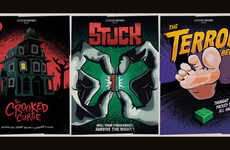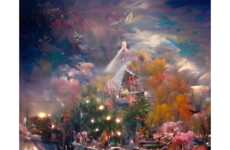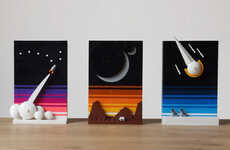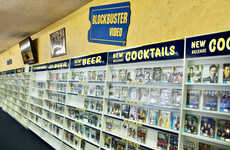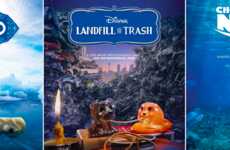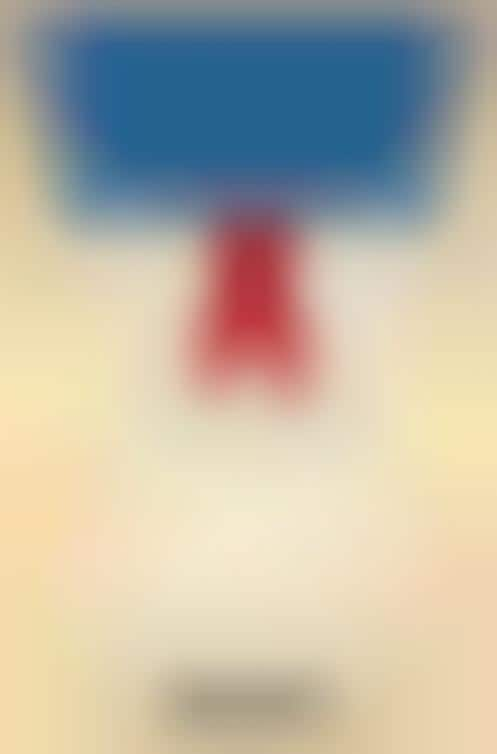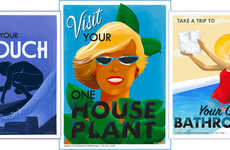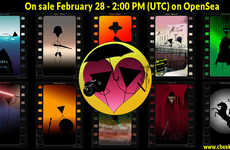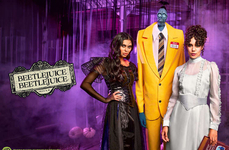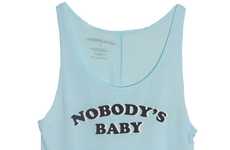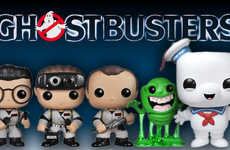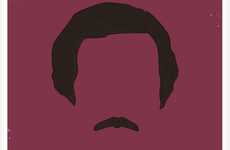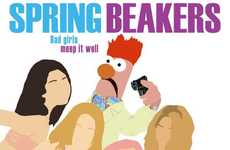
The Alternative Ghostbusters Posters are a New Look for a Classic
Jordan Sowunmi — July 16, 2011 — Pop Culture
References: shortlist & howtobearetronaut
The 'alternative' Ghostbusters posters are a series of fan-created posters of the 1984 Hollywood blockbuster that propelled stars Bill Murray and Dan Aykroyd to new heights.
The film grossed nearly $300 million dollars on a budget of $30 million, with proceeds numbering at over a half-billion when adjusted for inflation. It spawned a sequel, which was released in 1989, as well as two animated series.
This collection of 'alternative' Ghostbusters posters are different takes on how Ghostbusters would be marketed if it were an arthouse, independent film. The 'alternative' Ghostbusters posters draw influences from sci-fi movies, steampunk stories, and minimalism. Each of the 'alternative' Ghostbusters posters seems like an invitation to a movie with the kind of aesthetics that would immediately grant it cult classic status, which the film achieved, despite its massive box office gross.
Fans of the Ghostbusters franchise have a reason to rejoice: A script for the third film has been completed by Gene Stupnitsky and Lee Eisenberg, two of the writers behind NBC's the Office. The script is awaiting approval from Bill Murray, but is still in the development stage.
Until then, enjoy these 'alternative' Ghostbusters posters as a stopgap.
Implications - In the last few years, there has been a newfound consumer desire for retro styles, clothing and tropes of the past. A company can capitalize on this by creating marketing that harkens back to a different time in the companies' history. By showing their old logos, products, and designs, the company shows the development it has made over the years and establishes a connection between their history and their present, allowing consumers to be a part of the process.
The film grossed nearly $300 million dollars on a budget of $30 million, with proceeds numbering at over a half-billion when adjusted for inflation. It spawned a sequel, which was released in 1989, as well as two animated series.
This collection of 'alternative' Ghostbusters posters are different takes on how Ghostbusters would be marketed if it were an arthouse, independent film. The 'alternative' Ghostbusters posters draw influences from sci-fi movies, steampunk stories, and minimalism. Each of the 'alternative' Ghostbusters posters seems like an invitation to a movie with the kind of aesthetics that would immediately grant it cult classic status, which the film achieved, despite its massive box office gross.
Fans of the Ghostbusters franchise have a reason to rejoice: A script for the third film has been completed by Gene Stupnitsky and Lee Eisenberg, two of the writers behind NBC's the Office. The script is awaiting approval from Bill Murray, but is still in the development stage.
Until then, enjoy these 'alternative' Ghostbusters posters as a stopgap.
Implications - In the last few years, there has been a newfound consumer desire for retro styles, clothing and tropes of the past. A company can capitalize on this by creating marketing that harkens back to a different time in the companies' history. By showing their old logos, products, and designs, the company shows the development it has made over the years and establishes a connection between their history and their present, allowing consumers to be a part of the process.
Trend Themes
1. Retro Marketing - Capitalizing on consumer desire for retro styles and tropes by incorporating old logos, products, and designs to establish a connection between history and present.
2. Fan-created Art - The rise of fan-created art as a way to showcase alternative takes on popular movies, creating new marketing opportunities.
3. Cult Classic Aesthetics - Using aesthetics that evoke cult classic status to attract a dedicated fanbase and differentiate from mainstream marketing strategies.
Industry Implications
1. Film and Entertainment - Exploring the potential of fan-created art and alternative marketing strategies to engage audiences and create unique experiences.
2. Fashion and Apparel - Leveraging the consumer desire for retro styles to create clothing lines and accessories that cater to nostalgia and personal expression.
3. Design and Advertising - Incorporating cult classic aesthetics into advertising campaigns to capture attention and stand out in a crowded market.
4.9
Score
Popularity
Activity
Freshness

